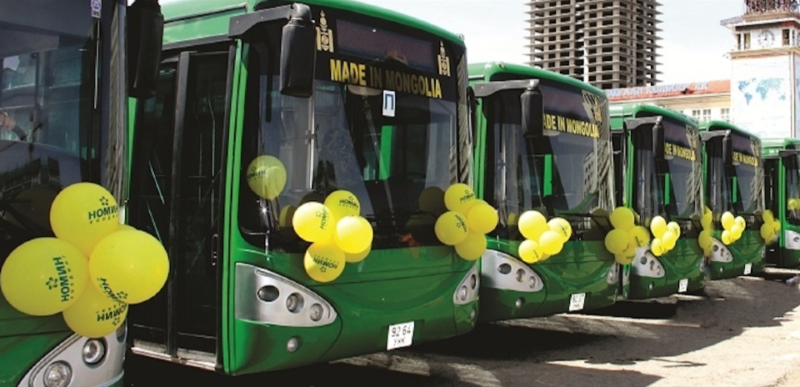Building on the fresh momentum resulting from the Paris Climate Change Agreement, 2016 is a crucial year to translate global commitments on climate change and development finance into concrete actions and plans. In light of this, the United Nations Framework Convention on Climate Change’s (UNFCCC) secretariat has organised a NAMA Market Place session to be held during this year’s Asia Pacific Carbon Forum from 5-7 September in the Republic of Korea to facilitate implementation of nationally appropriate mitigation actions (NAMAs) from countries in the Asia Pacific region.

Since 2010, developing countries including Nigeria have made efforts in preparing their NAMAs, which have the dual objective of contributing toward national sustainable development goals and to global efforts to address climate change. They are also a major vehicle in implementing developing countries’ nationally determined contributions (NDCs) under the Paris Agreement.
The NAMA Market Place session will provide experts from four countries – Mongolia, Pakistan, the Philippines and Vietnam – with a platform to present their NAMAs to a panel of public donors and private investors. Confirmed public donors include the NAMA Facility, which last month announced its 4th Call for project proposals, and the Green Climate Fund, which recently approved its first funding proposals for 2016 totalling $256.6 million. The private investors serving as panellists are still to be confirmed.
A short description of the four NAMAs that will be showcased at the event are hereby highlighted.
Nationally Appropriate Mitigation Actions in the Construction Sector in Mongolia
The energy sector in Mongolia is by far the largest contributor to the country’s greenhouse gas (GHG) emissions. Increased demand for housing as a result of economic growth and a surging rural to urban migration has caused a corresponding spike in energy requirements, projected to rise at an average rate of over 10% from 2015 to 2035.
Mongolia’s GHG mitigation policy focuses on the use of energy efficient appliances and on reducing heat loss in buildings, aiming at a 20% reduction in heat loss by 2020 and 40% by 2030 compared to 2014 levels, targets that have been well reflected in Mongolia’s Intended Nationally Determined Contribution (INDC). A pronounced challenge in translating these pledges into action has been the lack of financing. This NAMA can help the government catalyse finance and support to achieve transformational GHG reductions in the construction sector, while achieving sustainable development targets. Total resources required over the three-year period 2017-2020 amount to $8,169,863.
Pakistan: Renewable Energy Distributed Generation NAMA
As in Mongolia, Pakistan’s energy sector is the largest contributor to GHG emissions in the country, despite a shortfall in electricity generation. As highlighted in Pakistan’s Vision 2030, ensuring availability of affordable energy is the bedrock of the country’s future development. To address both issues, Pakistan’s Renewable Energy Distributed Generation NAMA promotes the development of renewable energy projects in the near and long term by addressing a number of existing technical and financial barriers.
The NAMA seeks to establish a Financial Mechanism to enable Pakistani commercial banks to enter the DG RE market, while a Risk Sharing Facility (RSF) will offer a guarantee for losses incurred for non-performing loans under the programme. It also seeks to establish RE technology certification and a vendor accreditation programme to reduce the perceived risks by financial institutions and end-users.
Philippines: Enabling Distributed Solar
Despite the policy push in the Philippines to enable renewable energy, consumers are not taking advantage of these opportunities, mostly due to a lack of available financing options at competitive interest rates. This NAMA targets an increase in residential, commercial and industrial rooftop solar installations in on-grid utility service through specific financial and technical measures.
The financial component will establish a Credit Guarantee Fund, engage local financial institutions to expand the financing options available for distributed solar projects, and initiate a pipeline of “finance ready” projects. The technical component will reduce technology risks currently perceived by both consumers and banks. The total international support required is Euro 20 million. The NAMA support project is expected to directly leverage Euro 89 million in private sector funds and catalyse the distributed solar market estimated at Euro 400-800 million annually.
NAMA for the solid waste sector in Vietnam
Sustained economic growth in Vietnam coupled with increased consumption are pushing up solid waste generation rates. As of 2010, approximately 26,000 tons of solid waste was generated daily in Vietnam, with most of it being disposed in open dump sites and unsanitary landfills without prior treatment, highlighting the need to shift to more sustainable practices.
This NAMA aims to reduce the solid waste generated and to implement waste segregation. It foresees biological treatment of organic waste through composting and anaerobic digestion, and the recovery, reuse and recycling of inorganic waste.
The cost of implementing the measures proposed by the NAMA is estimated at an average minimum investment of $110 million per year until 2020 in solid waste treatment facilities. It is proposed that 80% of these investment requirements be met by domestic sources of financing, both public and private, with the remainder coming from international sources.
This year’s Asia Pacific Carbon Forum is taking place during the Global Green Growth Week 2016.
Courtesy: NAMA News
